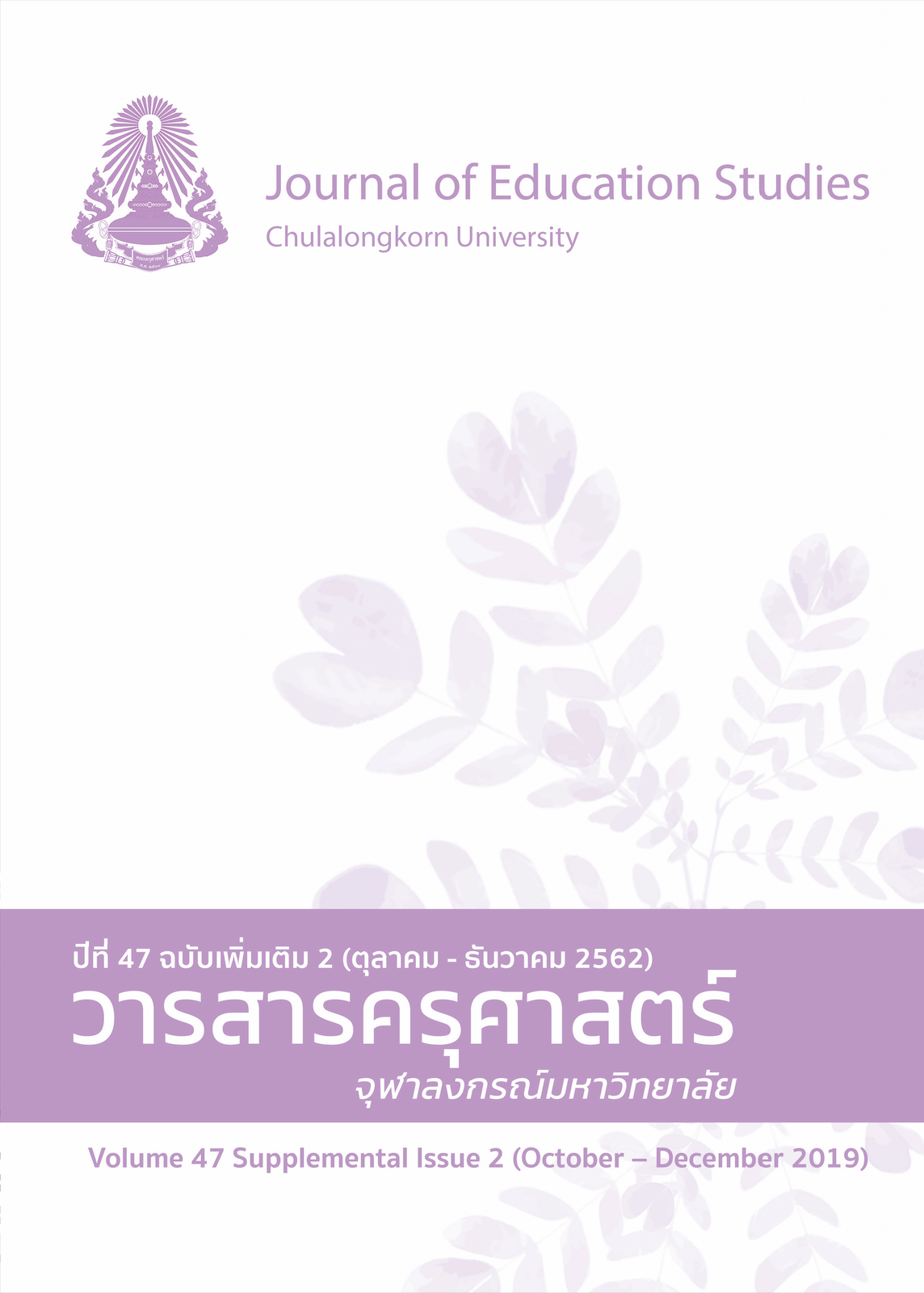Effects of Spatial Activities on Drawing Skills for Sixth Grade Students
Keywords:
SPATIAL ACTIVITIES, DRAWING SKILLS, PRATHOMSUKSA 6Abstract
The purpose of this research was to study the effect of spatial activities on drawing skills for sixth grade students. The research design was experimental research, using pretest–posttest one group design and the experimental group exercised for 50 minutes a day, once a week for a period of 8 weeks. The sample was 30 second level Kindergarteners from Watchaimomgkon School, under Bangkok student Education. The research tool used in this study was the pretest–posttest, program of spatial activities and improvement in attitude of the student in the string classes of spatial activities after the experiment. The data was statistically analyzed by using means, standard deviation and t-test.
The research finding found that, the scores of the students after participating in spatial activities were higher than before at a .05 significance level, and analysis of attitudes of the sixth grade of students on the spatial activities could be found that the majority of the students enjoyed these activities representing 86.7 percent.
References
Clark, G. (1988). CDAT: Clark’s drawing abilities test. Bloomington: Arts Publishing.
Feldman, E. B. (1979). Becoming human through art: Aesthetic experience in the school. New Jersey: Prentice–Hall.
Gardner, H. (1993). Multiple intelligences: The theory in practice. New York: Harper Collins.
Grande, J. D., & Morrow, L. (1995). Curriculum and evaluation standards for school mathematics Addenda series grades K–6 (3 ed.). Washington, DC: Library of Congress Cataloging.
Harris, D. B. (1963). Children’s drawing as measure of intelligence maturity. New York: Harcourt Brace, & Co.
Khooshabeh, P., & Hegarty, M. (2010). Inferring cross-sections: when internal visualizations are more important than properties of external visualizations. Human-Computer Interaction, 25, 119-147.
Koster, J. B. (2001). Growing artists teaching art to young children. New York: Thomson Learning.
Lowenfeld, V., & Brittain, W. L. (1987). Creative and mental growth (5th ed.). New York: Macmillan.
Piaget, J. (1972). Science of education and the psychology of the child (Revised ed.). New York: Harcourt Brace Jovanovich.
Simpson, M. (1988). The English-Thai dictionary. Schweiz: Staub.
Willats, J. (1977). How children learn to represent three-dimentional space in drawing. In G. Butterworth (Ed.), The child’s representation of the world (pp. 137-179). New York: Plenum Press.




